Abstract
Using indirect immunofluorescence and flow cytometry, we studied the reactivity of an antibody to human fibronectin with human polymorphonuclear leucocytes (PMNL). Our main objective was to compare the intensity of reaction of this antibody with inflammatory vs non-inflammatory PMNL. We used peripheral blood PMNL as a source of non-inflammatory cells and PMNL isolated from the synovial fluid of patients with rheumatoid arthritis as a source of inflammatory cells. Our findings revealed considerably brighter staining of the inflammatory PMNL. Using flow cytometry as a method of measurement, a difference in fluorescence intensity of at least 40 channels (log scale) was observed in all 12 patients studied when comparing peripheral blood with synovial fluid PMNL. In inflammatory PMNL, fibronectin was found both at the intracellular and membrane levels of the cell whereas fibronectin could be detected only intracellularly in non-inflammatory PMNL.
Full text
PDF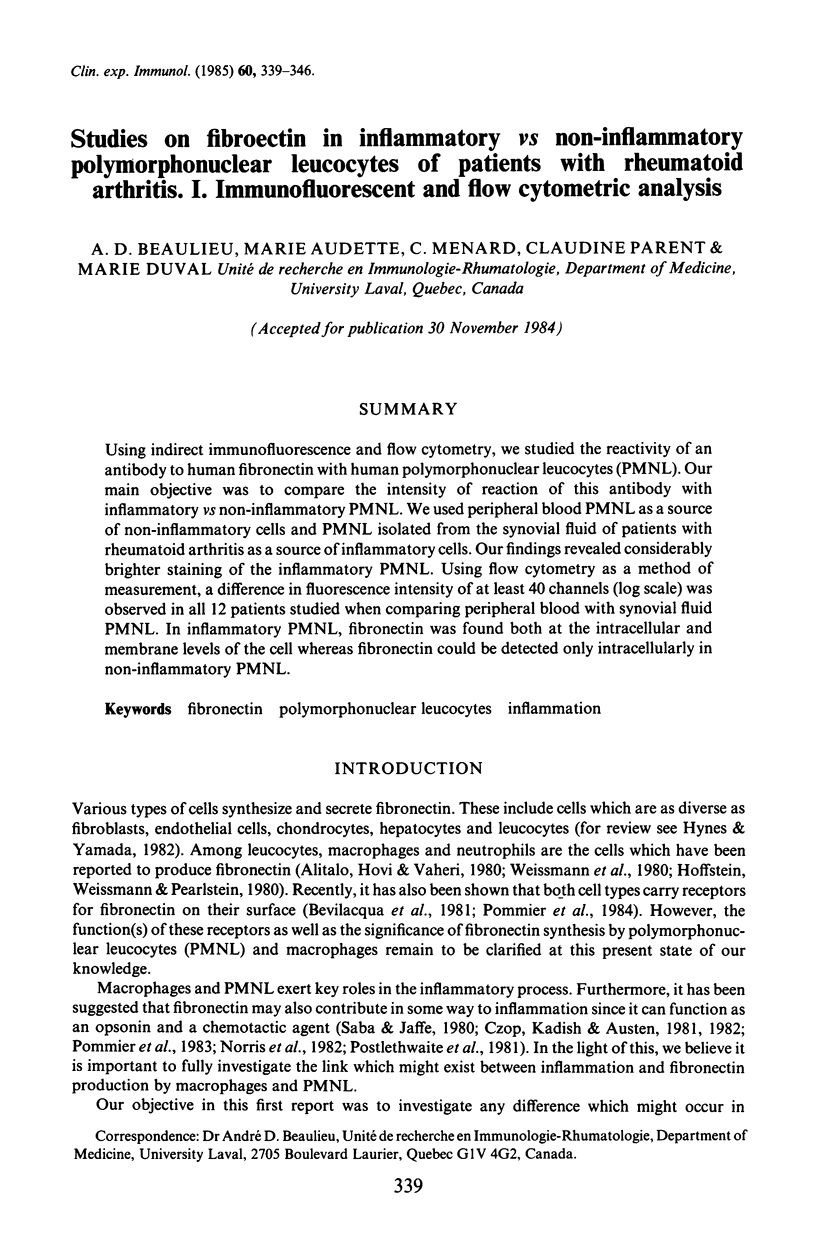
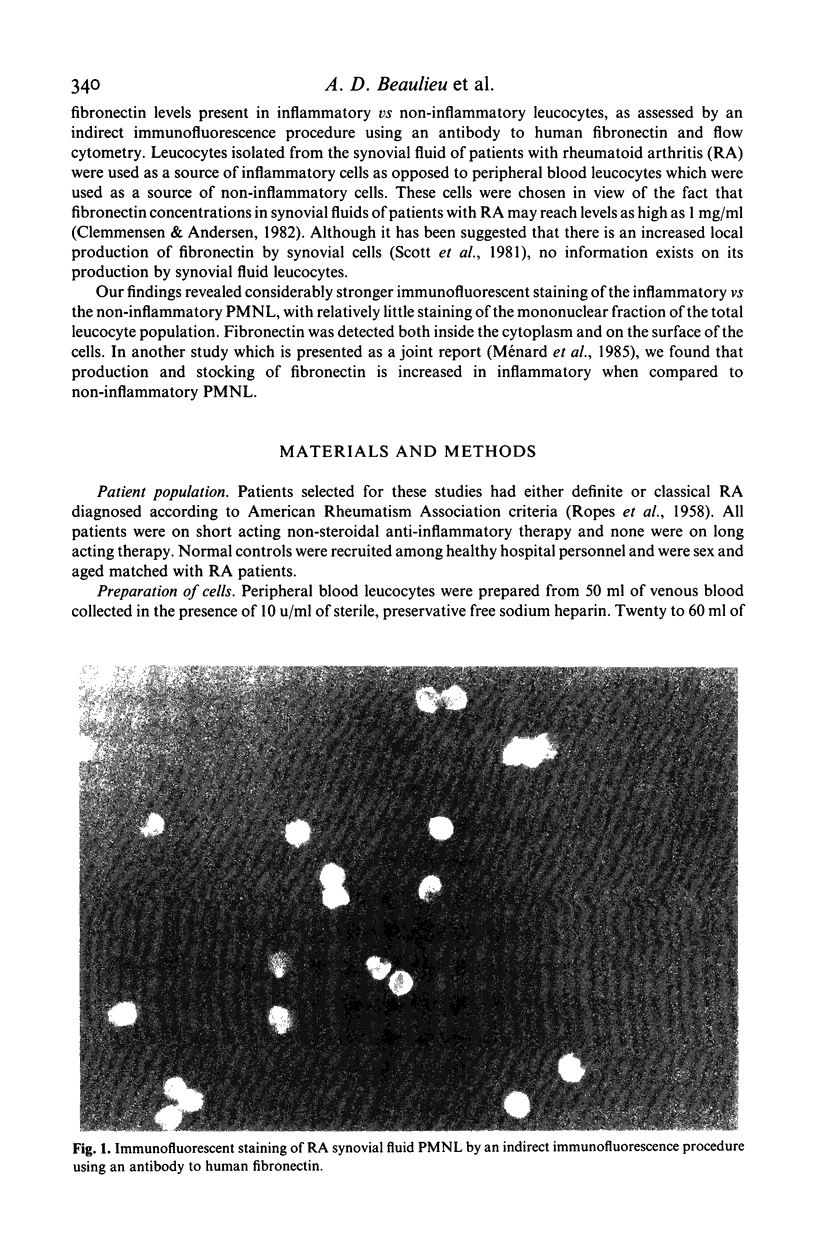
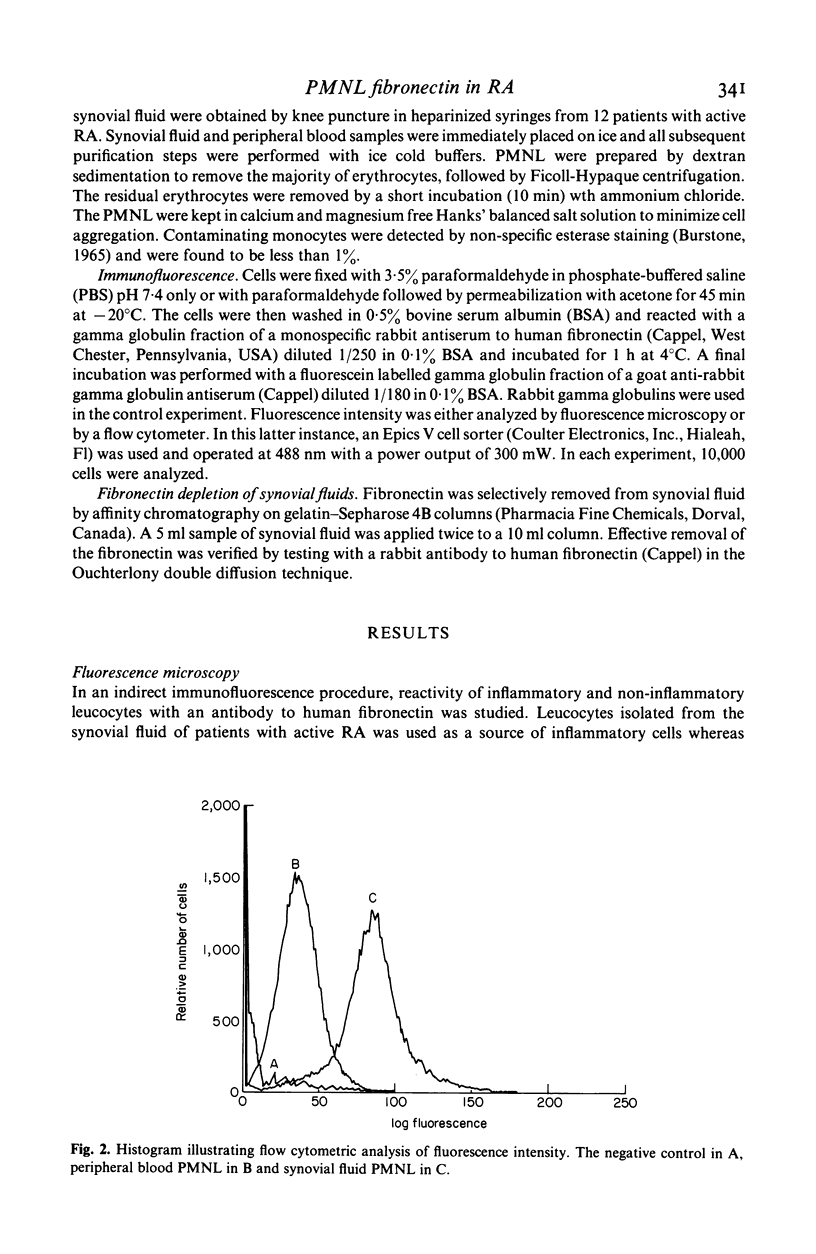
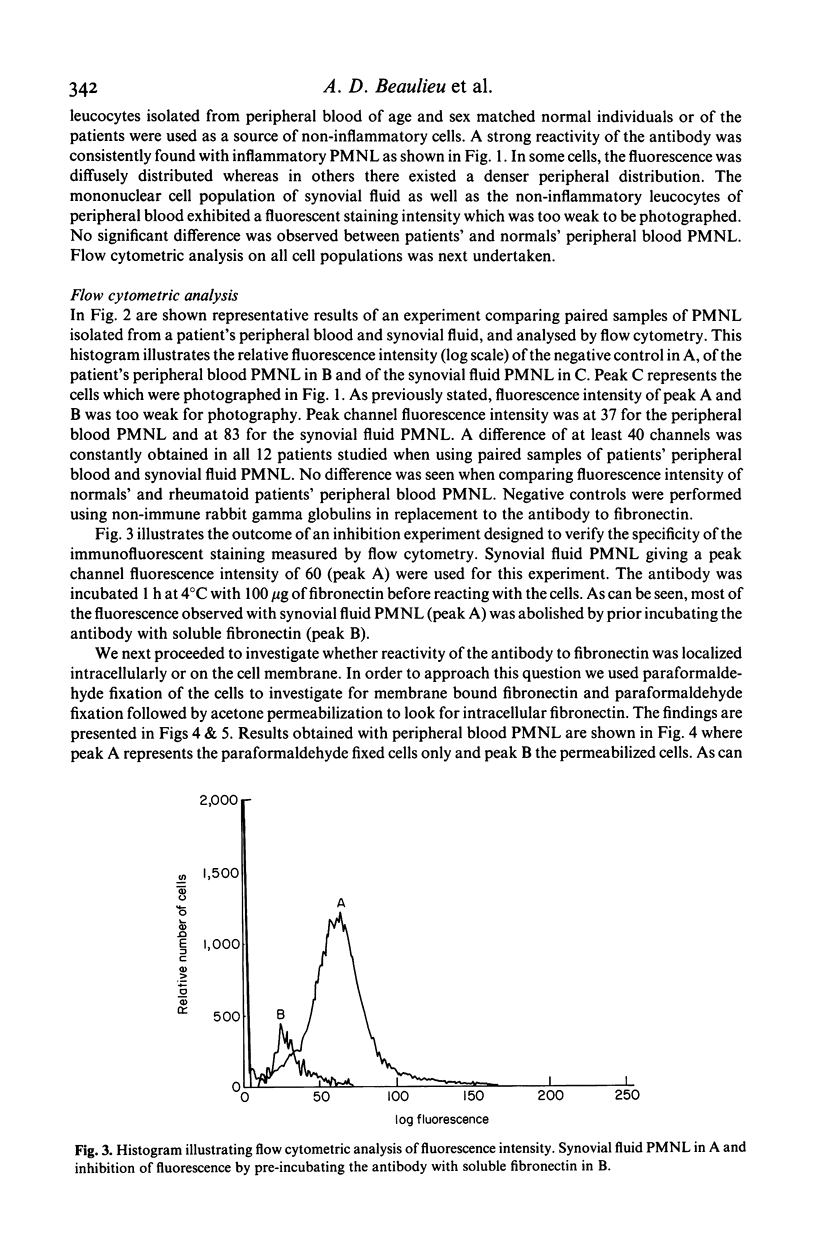
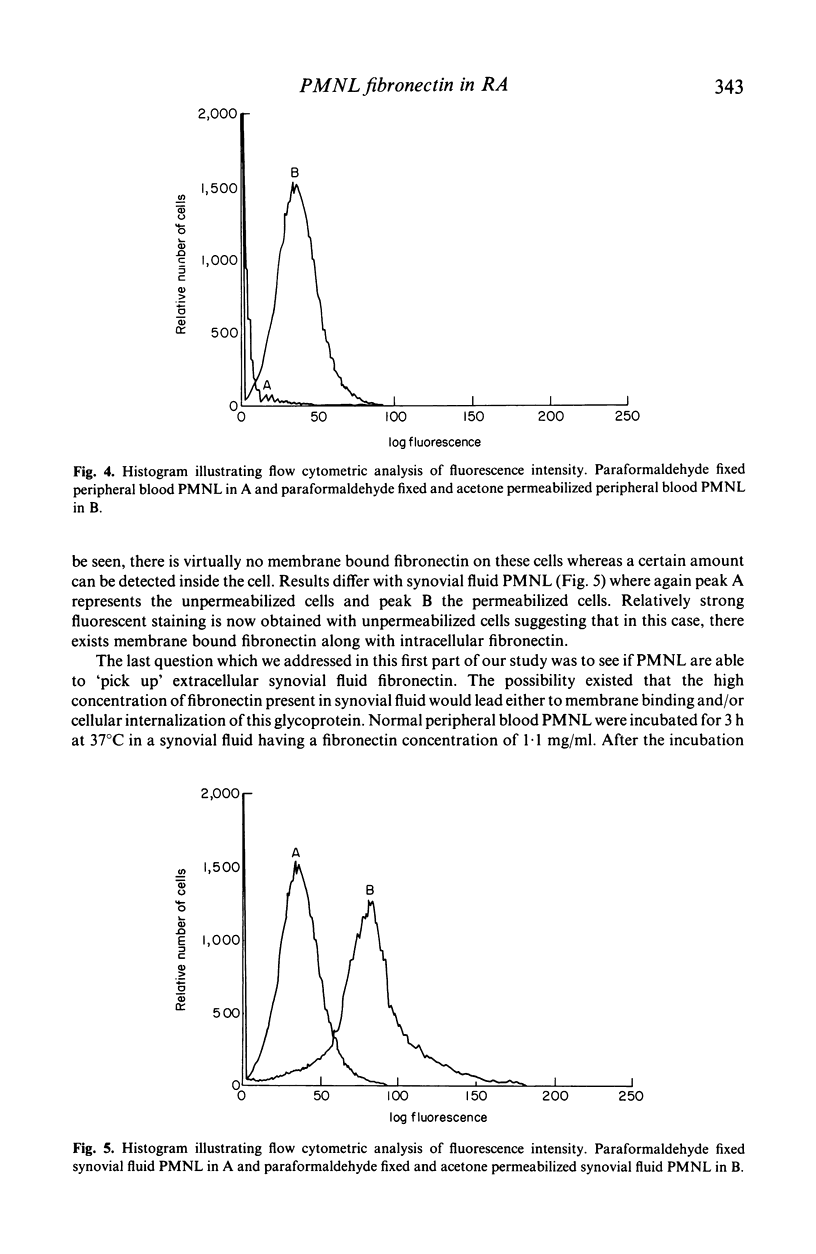
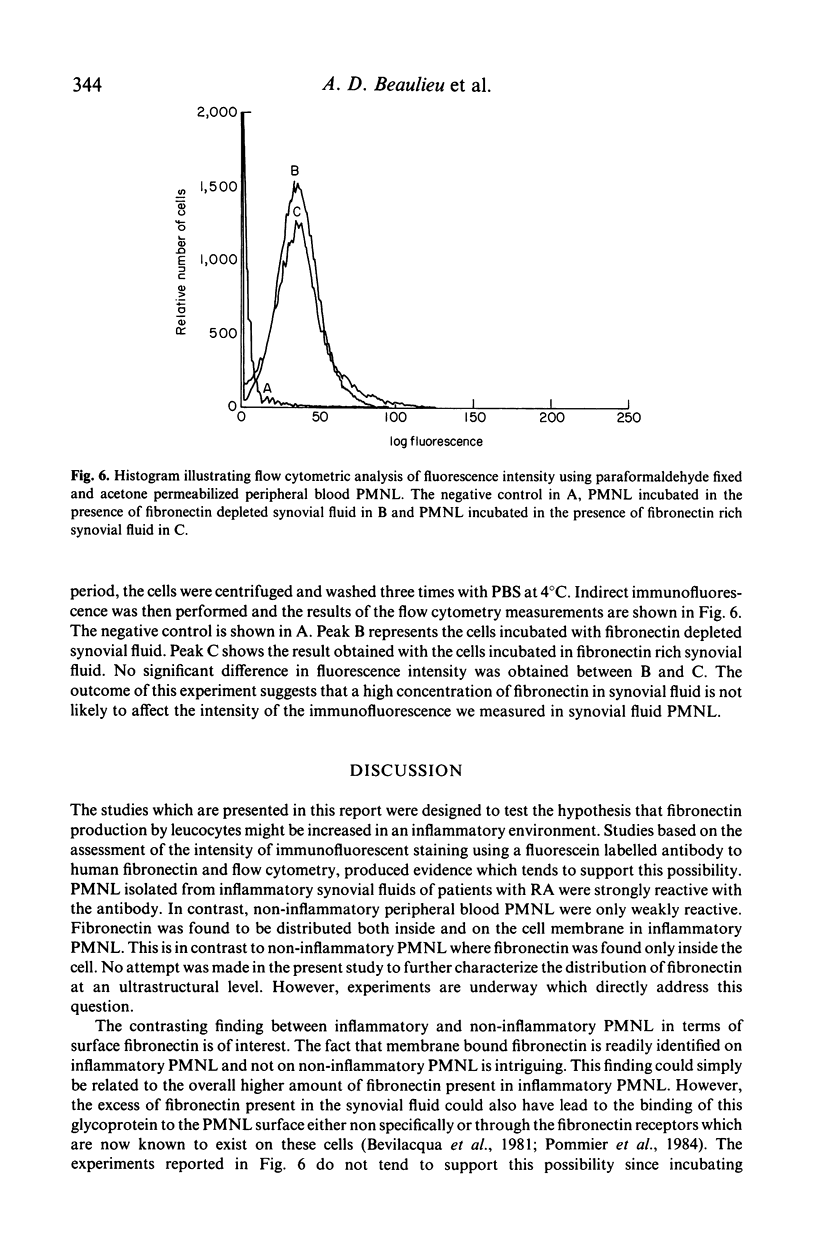
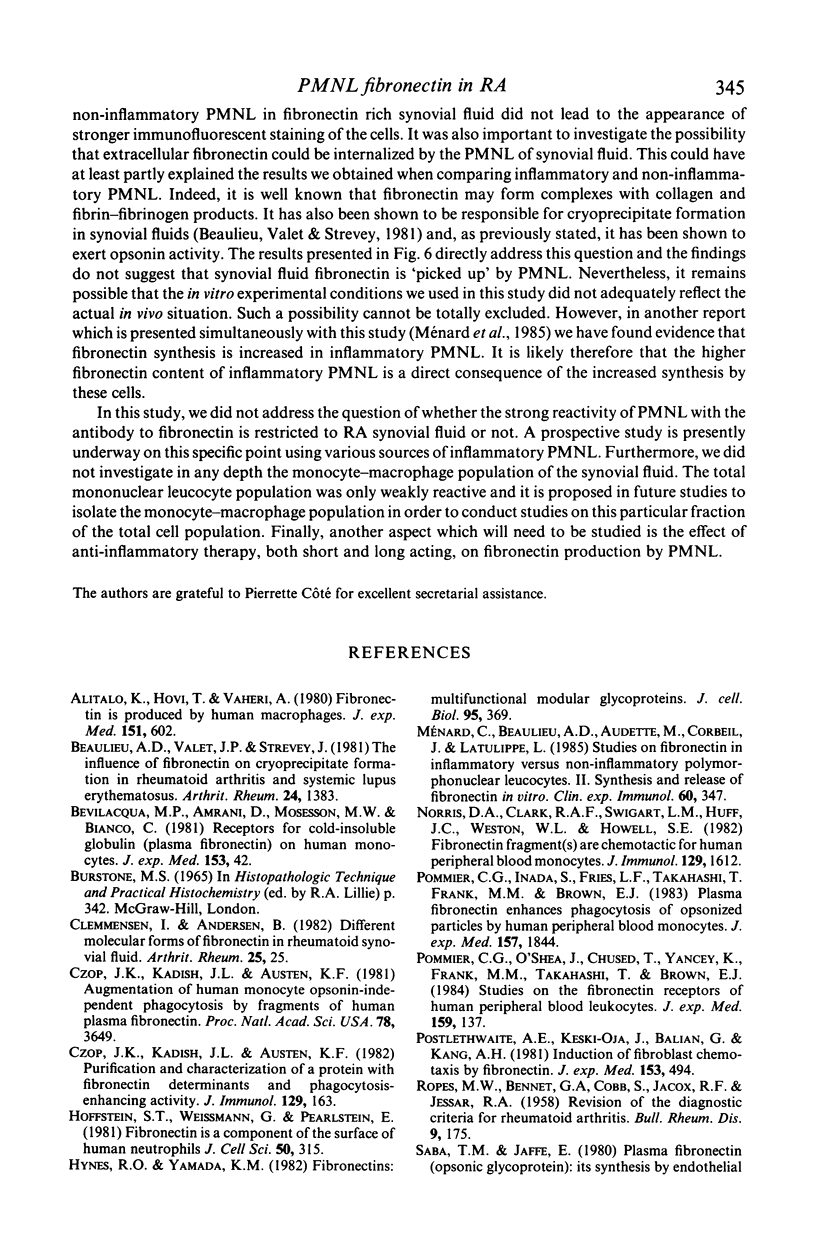
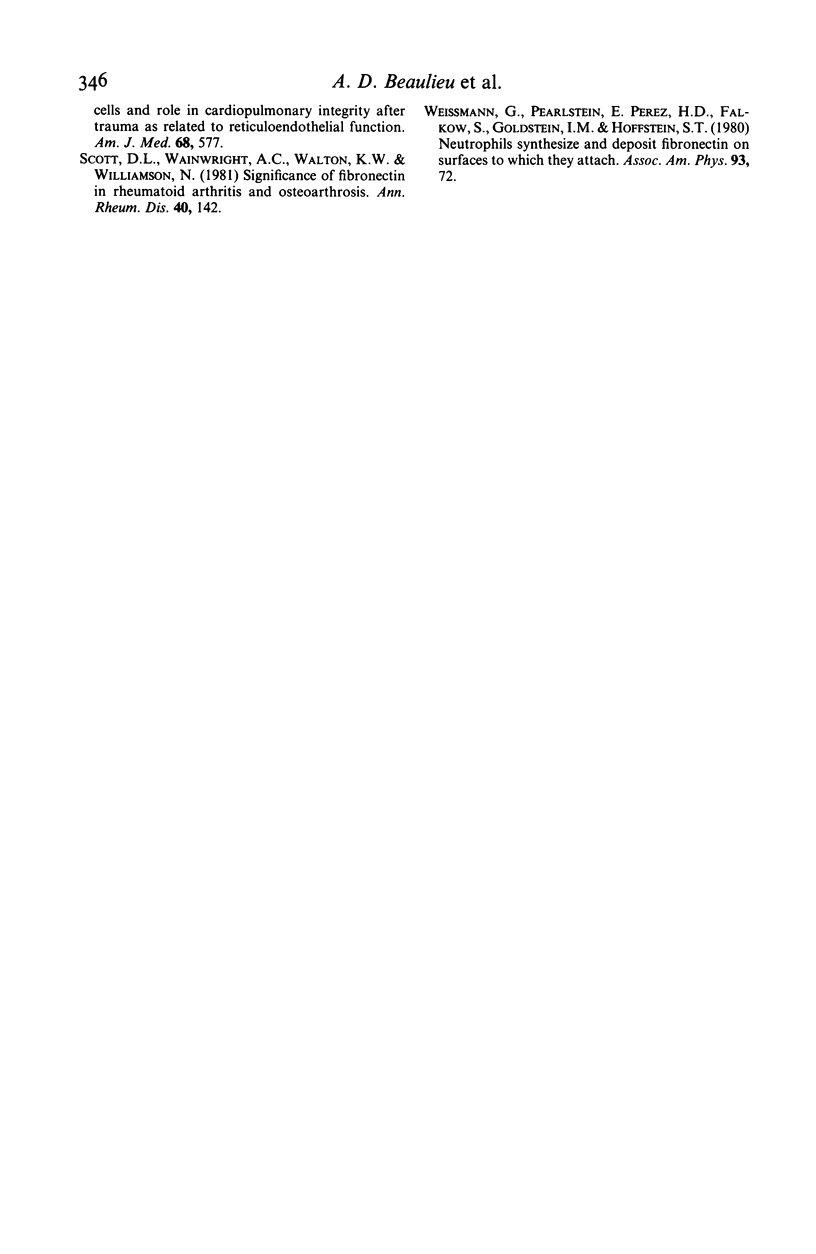
Images in this article
Selected References
These references are in PubMed. This may not be the complete list of references from this article.
- Alitalo K., Hovi T., Vaheri A. Fibronectin is produced by human macrophages. J Exp Med. 1980 Mar 1;151(3):602–613. doi: 10.1084/jem.151.3.602. [DOI] [PMC free article] [PubMed] [Google Scholar]
- Beaulieu A. D., Valet J. P., Strevey J. The influence of fibronectin on cryoprecipitate formation in rheumatoid arthritis and systemic lupus erythematosus. Arthritis Rheum. 1981 Nov;24(11):1383–1388. doi: 10.1002/art.1780241108. [DOI] [PubMed] [Google Scholar]
- Bevilacqua M. P., Amrani D., Mosesson M. W., Bianco C. Receptors for cold-insoluble globulin (plasma fibronectin) on human monocytes. J Exp Med. 1981 Jan 1;153(1):42–60. doi: 10.1084/jem.153.1.42. [DOI] [PMC free article] [PubMed] [Google Scholar]
- Clemmensen I., Andersen R. B. Different molecular forms of fibronectin in rheumatoid synovial fluid. Arthritis Rheum. 1982 Jan;25(1):25–31. doi: 10.1002/art.1780250104. [DOI] [PubMed] [Google Scholar]
- Czop J. K., Kadish J. L., Austen K. F. Augmentation of human monocyte opsonin-independent phagocytosis by fragments of human plasma fibronectin. Proc Natl Acad Sci U S A. 1981 Jun;78(6):3649–3653. doi: 10.1073/pnas.78.6.3649. [DOI] [PMC free article] [PubMed] [Google Scholar]
- Czop J. K., Kadish J. L., Austen K. F. Purification and characterization of a protein with fibronectin determinants and phagocytosis-enhancing activity. J Immunol. 1982 Jul;129(1):163–167. [PubMed] [Google Scholar]
- Hoffstein S. T., Weissmann G., Pearlstein E. Fibonectin is a component of the surface coat of human neutrophils. J Cell Sci. 1981 Aug;50:315–327. doi: 10.1242/jcs.50.1.315. [DOI] [PubMed] [Google Scholar]
- Hynes R. O., Yamada K. M. Fibronectins: multifunctional modular glycoproteins. J Cell Biol. 1982 Nov;95(2 Pt 1):369–377. doi: 10.1083/jcb.95.2.369. [DOI] [PMC free article] [PubMed] [Google Scholar]
- Menard C., Beaulieu A. D., Audette M., Corbeil J., Latulippe L. Studies on fibronectin in inflammatory vs non-inflammatory polymorphonuclear leucocytes of patients with rheumatoid arthritis. II. Synthesis and release of fibronectin in vitro. Clin Exp Immunol. 1985 May;60(2):347–354. [PMC free article] [PubMed] [Google Scholar]
- Norris D. A., Clark R. A., Swigart L. M., Huff J. C., Weston W. L., Howell S. E. Fibronectin fragment(s) are chemotactic for human peripheral blood monocytes. J Immunol. 1982 Oct;129(4):1612–1618. [PubMed] [Google Scholar]
- Pommier C. G., Inada S., Fries L. F., Takahashi T., Frank M. M., Brown E. J. Plasma fibronectin enhances phagocytosis of opsonized particles by human peripheral blood monocytes. J Exp Med. 1983 Jun 1;157(6):1844–1854. doi: 10.1084/jem.157.6.1844. [DOI] [PMC free article] [PubMed] [Google Scholar]
- Pommier C. G., O'Shea J., Chused T., Yancey K., Frank M. M., Takahashi T., Brown E. J. Studies on the fibronectin receptors of human peripheral blood leukocytes. Morphologic and functional characterization. J Exp Med. 1984 Jan 1;159(1):137–151. doi: 10.1084/jem.159.1.137. [DOI] [PMC free article] [PubMed] [Google Scholar]
- Postlethwaite A. E., Keski-Oja J., Balian G., Kang A. H. Induction of fibroblast chemotaxis by fibronectin. Localization of the chemotactic region to a 140,000-molecular weight non-gelatin-binding fragment. J Exp Med. 1981 Feb 1;153(2):494–499. doi: 10.1084/jem.153.2.494. [DOI] [PMC free article] [PubMed] [Google Scholar]
- ROPES M. W., BENNETT G. A., COBB S., JACOX R., JESSAR R. A. 1958 Revision of diagnostic criteria for rheumatoid arthritis. Bull Rheum Dis. 1958 Dec;9(4):175–176. [PubMed] [Google Scholar]
- Saba T. M., Jaffe E. Plasma fibronectin (opsonic glycoprotein): its synthesis by vascular endothelial cells and role in cardiopulmonary integrity after trauma as related to reticuloendothelial function. Am J Med. 1980 Apr;68(4):577–594. doi: 10.1016/0002-9343(80)90310-1. [DOI] [PubMed] [Google Scholar]
- Scott D. L., Wainwright A. C., Walton K. W., Williamson N. Significance of fibronectin in rheumatoid arthritis and osteoarthrosis. Ann Rheum Dis. 1981 Apr;40(2):142–153. doi: 10.1136/ard.40.2.142. [DOI] [PMC free article] [PubMed] [Google Scholar]
- Weissmann G., Pearlstein E., Perez H. D., Falkow S., Goldstein I. M., Hoffstein S. T. Neutrophils synthesize and deposit fibronectin on surfaces to which they attach. Trans Assoc Am Physicians. 1980;93:72–84. [PubMed] [Google Scholar]



